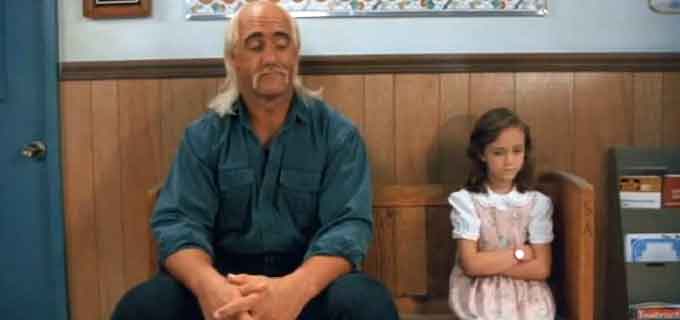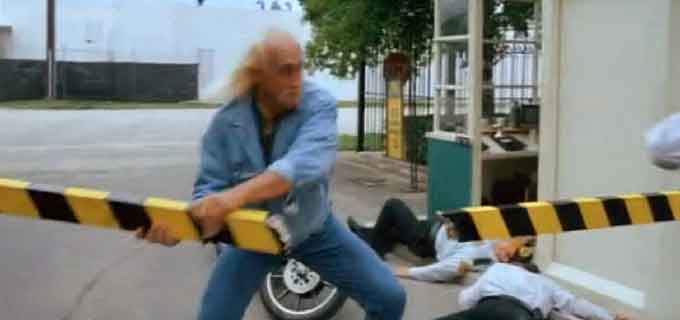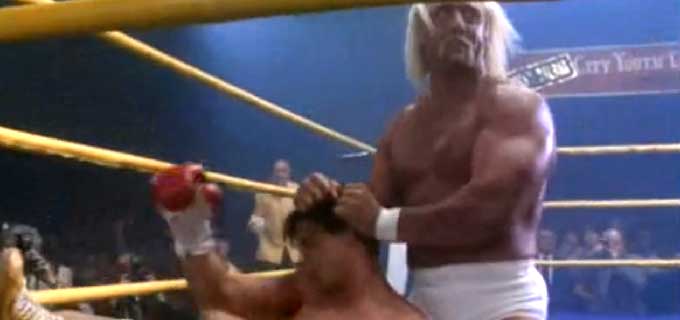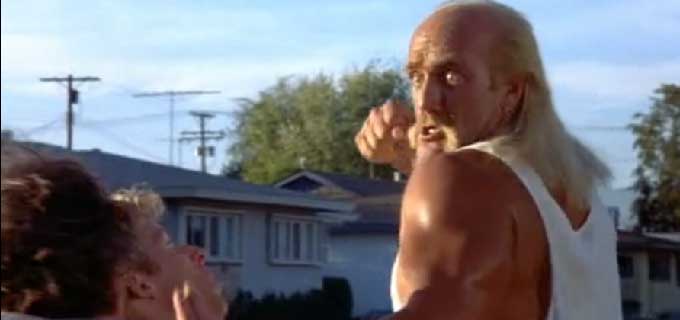This page may contain one or more affiliate links, which means that if you purchase a product through that link, I may receive compensation. The links will be identified with the text "affiliate link". Click to learn more.
If you grew up in the late 80s or early 90s, then you know about Hulk Hogan movies, because studios tried to milk his celebrity status from being on WWF. (Word Wrestling Federation, now known as WWE) This American icon was depicted in all sorts of ways, from action figures to video games.
Suburban Commando
Suburban Commando is one of the great Hulk Hogan movies because his character physically abuses suburban people, just like the rest of his film and TV character. Physical violence is what he does best, essentially. It is like a cross between Star Wars and Commando, if those were movies for kids.
The movie (affiliate link) features other kid star favorites during its time period like Christopher Loyd and some chick from Saved By The Bell.

Suburban Commando also has a scene showing the arcade game After Burner (the same game John is playing in Terminator 2) but I cannot tell if it is a plug or not, because I do not think the movie shows the title. The video game was popular at the time and inspired many terrible computer and video game ports.
Mr Nanny

Mr Nanny is a movie where a tough guy has to deal with little kids. It is part of a genre where movies do the same thing with whatever tough guy is popular at the time. Arnold Schwarzenegger was in Kindergarten Cop. Dwayne Johnson (also known for his wrestling fame) was in the Tooth Fairy.
The movie is like Home Alone, (affiliate link) where a boy genius decides to tease an adult triple his height and then feigns surprise when his head is forcibly drop-kicked through some dry wall.

Like other Hulk Hogan movies, his character causes physical pain and violence to any living being that is capable of making simple requests, such as “get off the motorcycle” when going through a security check point. The perfectly normal response is to break off a piece of a guard booth and beat people with it. I imagine it is the same sort of response he would give to suspicious statements like “could you pass the salt?” or “I love you”.
Rocky 3

If you did not believe that Hulk Hogan movies portrayed him as a violent man, feel free to watch Rocky 3. As an apparent guest-celebrity stunt to get kids to watch the movie, Hulk Hogan makes an appearance in the ring with Rocky. No, I do not mean they boxed. I mean the boxer boxed and the wrestler wrestled. Or to put it simply, Hogan throws Rocky around like a rag doll and crushes his head under his body like rotting melon. What is incredible is that no one points out how dumb this is, and instead praise the film and its historical significance. Yeah, I am confused too.

